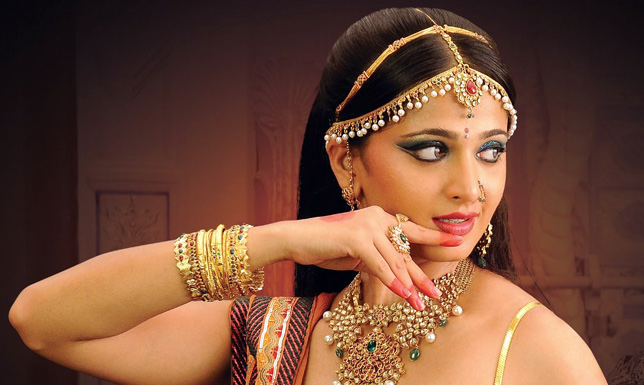Indian Bollywood Movies Biography
source(google.com.pk)
The world's movie capital is not Hollywood but Bollywood. Bollywood is the nickname for the Indian film industry located in Bombay (now known as Mumbai, though Mollywood hasn't quite caught on.)
Indians are in love with movies, even though most films follow a similar format called masala (the word for a collection of spices). Movies are three to four hours long (and include an intermission), include dozens of songs and dances (featuring 100 or so choreographed dancers), top stars, the story between the songs of boy meets girl (without any kissing or sexual contact), lots of action (though no bloodshed), and always - a happy ending.
Fourteen million Indians go to the movies on a daily basis (about 1.4% of the population of 1 billion) and pay the equivalent to the average Indian's day's wages (US $1-3) to see any of the over 800 films churned out by Bollywood each year. That's more than double the number of feature films produced in the United States.
Although American-made films have been edging into India, only the blockbuster Titanic has ever made India's top five list. One hundred and fifty U.S. films arrived in India in 1998. However, Indian films have become somewhat of an international obsession.
Bollywood films are being shown in American and British theaters on a more and more frequent basis. These theaters have become community foci for the South Asian communities around the world. Though separated by a vast distance from home, South Asians have found Bollywood films to be a great way of staying in touch with their culture and their fellow South Asians.
Since India is a country of sixteen official languages and a total of twenty-four languages spoken by over a million people each, some portions of the film industry are fragmented. While Mumbai (Bollywood) leads India in film production, its specialty lies with Hindi movies. Chennai (formerly Madras) produces films in Tamil and Kolkata (formerly Calcutta) is the Bengali movie capital. Neighboring Pakistan's Lahore calls itself Lollywood.
Bollywood's film production center is a government-owned studio facility known as "Film City" in the northern suburbs of Mumbai. Bollywood traces its start to 1911 when the first silent Indian feature film was released by D.P. Phalke. The industry boomed and today there are over 250 theaters in Mumbai alone.
The stars of Bollywood are very popular and highly paid, considering the budget of the films. The lead star in a film often receives as much as 40% of the US $2 million budget for the typical masala film. Stars may be in such high demand that they're working on ten films at once. Photographs of Bollywood stars grace shop windows and homes throughout the country.
Providing three to four hours of escapism is the primary objective of Bollywood and it's a recipe done well. Indian movies are becoming more and more popular around the world so watch for them in theaters and video stores near you.In the late 1960s and early 1970s, romance movies and action films starred actors like Rajesh Khanna, Dharmendra, Sanjeev Kumar and Shashi Kapoor and actresses like Sharmila Tagore, Mumtaz and Asha Parekh. In the mid-1970s, romantic confections made way for gritty, violent films about gangsters (see Indian mafia) and bandits. Amitabh Bachchan, the star known for his "angry young man" roles, rode the crest of this trend with actors like Mithun Chakraborty and Anil Kapoor, which lasted into the early 1990s. Actresses from this era included Hema Malini, Jaya Bachchan and Rekha.The 2000s saw a growth in Bollywood's popularity in the world. This led the nation's filmmaking to new heights in terms of quality, cinematography and innovative story lines as well as technical advances in areas such as special effects, animation, and so on. Some of the largest production houses, among them Yash Raj Films and Dharma Productions were the producers of new modern films. The opening up of the overseas market, more Bollywood releases abroad and the explosion of multiplexes in big cities, led to wider box office successes in India and abroad, including Lagaan (2001), Devdas (2002), Koi... Mil Gaya (2003), Kal Ho Naa Ho (2003), Veer-Zaara (2004), Rang De Basanti (2006), Lage Raho Munnabhai (2006), Krrish (2006), Dhoom 2 (2006), Om Shanti Om (2007), Chak De India (2007), Rab Ne Bana Di Jodi (2008), Ghajini (2008), 3 Idiots (2009), My Name is Khan (2010),Dabangg (2010) and The Dirty Picture delivering a new generation of popular actors (Hrithik Roshan, Abhishek Bachchan) and actresses (Aishwarya Rai, Preity Zinta, Rani Mukerji, Kareena Kapoor, Priyanka Chopra, Katrina Kaif and Vidya Balan), and keeping the popularity of actors of the previous decade. Among the mainstream films, Lagaan won the Audience Award at the Locarno International Film Festival and was nominated for Best Foreign Language Film at the 74th Academy Awards, while Devdas and Rang De Basanti were both nominated for the BAFTA Award for Best Foreign Language Film.
Indian Bollywood Movies

Indian Bollywood Movies

Indian Bollywood Movies

Indian Bollywood Movies

Indian Bollywood Movies

Indian Bollywood Movies
Indian Bollywood Movies

Indian Bollywood Movies

Indian Bollywood Movies

Indian Bollywood Movies

No comments:
Post a Comment